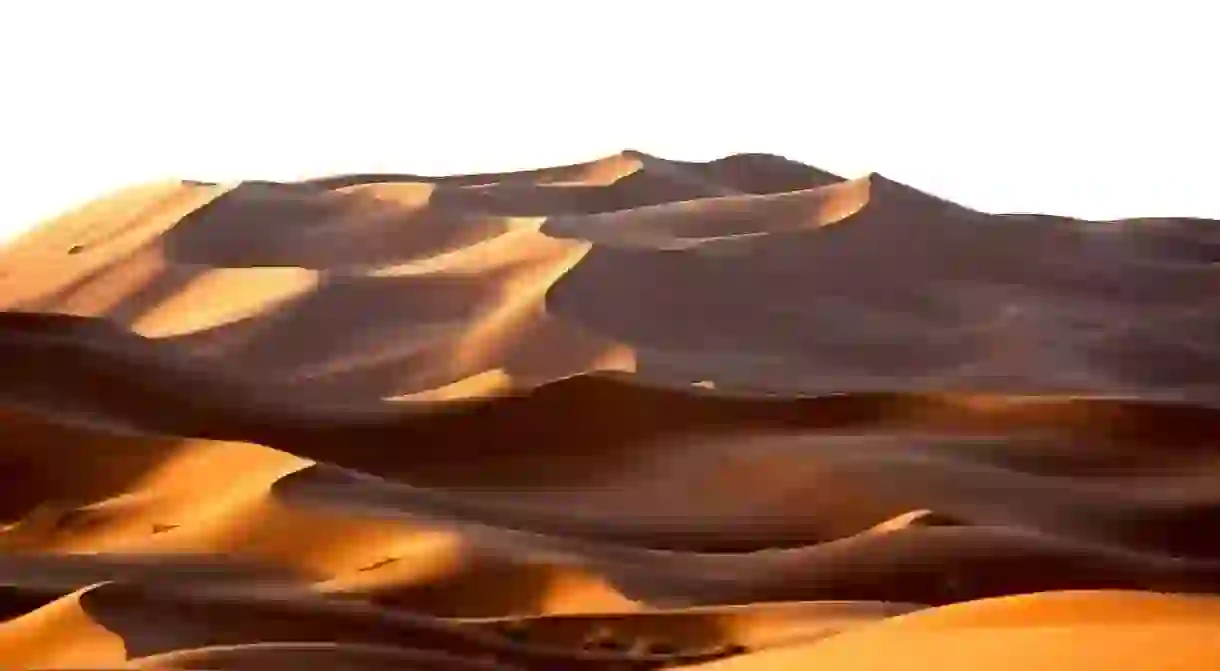How Climate Change is Impacting Nomadic Life in Morocco

While climate change has an effect on many regions of the world, its impact is often felt to a higher degree in areas where people spend significant periods of time outdoors. Morocco, with its nomadic communities and extensive agricultural industry, is one such example. Keep reading to see how the changing climate is affecting the people of Morocco.
Terrain in Morocco
Morocco covers an area of more than 446 square kilometres. It has coastlines along both the Mediterranean Sea and the Atlantic Ocean. The interior of the country is mainly mountainous, with the Atlas Mountains, split into three sections, and the Rif Mountains. Lands close to the Sahara Desert are hot and dry, and the large Moroccan Plateau is relatively flat. The plains are used for agriculture, while the drier areas are used to grow many palm trees.

Traditional Ways of Life in Morocco
To a large extent, the two ethnic groups of Morocco—the Arabs and the Berbers—have led very different traditional lives. While the Arabs tended to settle in communities, causing cities and towns to grow and flourish, the Berbers were historically nomadic. If the flatlands of Morocco attracted the Arabs, the mountains were definitely the domain of the Berbers. It is the Arabs who have been responsible for much of Morocco’s striking architecture. That’s not to say, however, that the Berber groups haven’t made huge contributions to the country’s history and culture.
Although many Berber groups now live in mountain villages, they still typically rely on farming to make a living and survive. Additionally, Morocco still has around 25,000 nomadic people, who move around and have no fixed home. For many years there were groups who were always on the move at the fringes of the Sahara Desert, seeking water and grazing land for their animals. The number of nomadic people is decreasing though, with climate change cited as one of the main reasons for people giving up the traditional nomadic way of life.

How the Climate Has Altered in Morocco
Global warming has led to the temperatures in Morocco becoming even more extreme. The effects are especially noticed in areas around the desert. Existing high temperatures are becoming even higher. These higher temperatures are causing conditions to be even drier. There is less rainfall, leading to serious droughts. The outlook isn’t positive; experts predict that the temperatures in North Africa, along with the Middle East, will increase twice as quickly as the average around the world.

Impact on Morocco’s Landscapes
Hot air becomes trapped around the Sahara Desert, which leads to the arid sandy expanses growing. Places that were once arable land are now covered in sand. Land that could previously be used for farming is now barren. Sand is found in areas that were once covered in date palms. There are also fewer places where nomadic herders can find suitable places for their animals. It is gloomily forecast that certain parts of the country will actually become uninhabitable.
It isn’t only the expanding desert that spells sorrow for certain parts of Morocco; the lack of rain and the drying up of existing water sources is also a huge effect of the rising temperatures. The Draa River, for example, is now dry for most of the year. (The construction of a dam played a key role, however, in the river ceasing to flow.) When water is found, contamination often means that it isn’t suitable for consumption.
Villages, such as M’Hamid, have now sprung up in places where once-nomadic people have chosen to settle.

Impact on Moroccan Life
The changing climate and conditions mean that people, nomadic or otherwise, cannot adequately take care of their animals. Goats, sheep, and camels cannot survive. This removes not only meat, milk, skins, and wool from families, some of which would be sold to make an income, but also an important means of transportation. Farmers struggle to grow crops. This has a knock-on effect, with less produce available for the wider community.
The change from nomadic life to village life can be a challenge for individuals. Instead of living by the seasons and having huge amounts of independence, people find themselves in unfamiliar situations with a whole host of social rules and expectations that they are just not accustomed to. The vast majority of nomadic people have little to no formal education, making it difficult to secure alternative employment.














